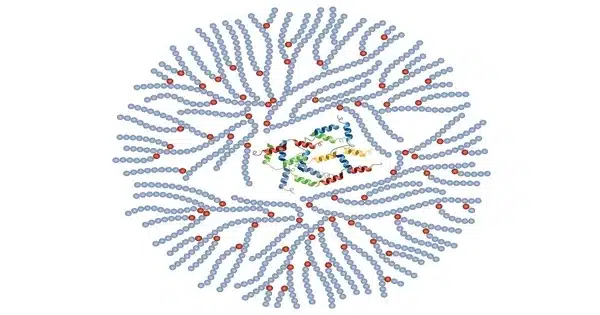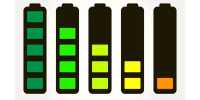Glycogen is a complex carbohydrate that is used to store energy in animals, including humans. It is a multibranched polysaccharide of glucose that is used to store energy in mammals, fungi, and bacteria. It is the primary form of glucose storage in the human body. It is commonly referred to as “animal starch” due to its structural similarities to starch, the principal energy storage molecule in plants.
Glycogen is one of two types of energy reserves: glycogen for short-term storage and triglyceride stored in adipose tissue (i.e., body fat) for long-term storage. In humans, glycogen is largely produced and stored in liver and skeletal muscle cells. Glycogen can account for 5-6% of the fresh weight of the liver: an adult liver weighing 1.5 kg can store approximately 100-120 grams of glycogen. Glycogen is found in skeletal muscle at a modest concentration (1-2% of muscle mass): an adult weighing 70 kg stores approximately 400 grams of glycogen.
Structure
Glycogen is a polymer composed of glucose molecules bonded together. It is highly branching, with several small chains coupled to a core protein called glycogenin. This branching pattern enables for the quick storage and release of glucose when energy is required. Small amounts of glycogen are also found in other organs and cells, such as the kidneys, red blood cells, white blood cells, and glial cells in the brain. During pregnancy, the uterus also stores glycogen to feed the embryo.
Storage
Glycogen is stored predominantly in the liver and muscles. The liver stores glycogen to assist in managing blood sugar levels and provide the body with a consistent supply of glucose. During periods of physical exercise, muscle glycogen is consumed locally within the muscle cells. The liver can store approximately 100-120 grams of glycogen, whereas muscles can store substantially more, with the precise amount varied depending on individual muscle mass and training condition.
Energy Source
When the body wants energy, it can swiftly convert glycogen into glucose via a process known as glycogenolysis. This glucose can be used to meet acute energy needs, such as increased physical activity or low blood sugar.
Glycogen is not obtained from the diet directly. It is instead produced by the body from dietary carbs. Excess glucose from carbohydrate digestion is transformed into glycogen and stored for later use.
Regulation
Hormones such as insulin and glucagon carefully regulate glycogen levels in the body to maintain a balance between glucose storage and release. Glycogen reserves in muscles and the liver can be depleted during prolonged physical activity or fasting. This can lead to fatigue and low blood sugar levels. To replenish glycogen stores, individuals need to consume carbohydrates in their diet.
















